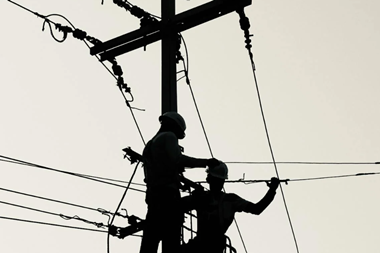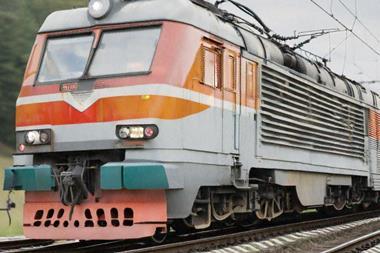Infrastructure is still a young asset class, but it has the potential to grow bigger than private equity or even real estate. First, though, it must attract sceptical investors Richard Lowe reports
The potential for infrastructure as a major institutional asset class is huge. Global requirements are estimated to be in the region of $10-30trn (€7.5-22.5trn), according to global alternatives investment manager RREEF. The US is a deep well for investors to tap, with an Ernst & Young report revealing a $170bn annual funding gap for infrastructure projects. The Asian Development Bank says south Asia's annual funding need is at least $90bn, being only with half met.
It is no surprise then that investors are increasingly seeing the likelihood that in the future the infrastructure investment universe will be larger than that of real estate. This is the view of Aberdeen Property Investors, for instance, according to Alessandro Bronda, head of investment strategy.
Jane Welsh, senior investment consultant at Watson Wyatt, certainly does not rule out the prospect. "The amounts of money people talk about having to put into infrastructure spend around the world is enormous. It is potentially up there with real estate and potentially much greater than private equity as a place to invest."
There is not only potential in terms of scale, but palpable interest from pension fund investors worldwide. Welsh says the interest is spread throughout Watson Wyatt's global client base, from investors in the US, UK, continental Europe and Australia. She estimates that approximately $2bn has been invested in the asset class over the last two years by these investors.
IPE Real Estate has already reported this year on a number of US and European pension funds investing in infrastructure for the first time, such as the Oregon Public Employees Retirement Fund and the Royal County of Berkshire Pension Fund.
Meanwhile, US giant California Public Employees Retirement System has entered into the process of hiring dedicated infrastructure investment staff and the London Pension Fund Authority is intending to piece together a global exposure to the asset class.
Institutional investors are particularly interested in the growing non-listed funds market, which offers exposure to real underlying infrastructure projects without the volatility and equity risk of listed investments.
Mercer believes there are currently 100 funds in the market today attempting to raise capital in excess of $100bn. And data from alternative assets data provider Preqin shows that aggregate capital raised by infrastructure funds (although this includes both listed and unlisted funds) has increased year on year between 2004 and 2007 (see page 65).
Launching a fund is one thing, finding the investments to place in the fund is more challenging. There is concern from investors and consultants that there are not enough investments to meet the proliferation of funds and, consequently, these funds will become more expensive. "There have been very large numbers of funds being raised," Welsh says. "A concern at the moment is there aren't enough investments to satisfy that demand and the risk is it's pushed up prices and therefore reduced expected returns for the class."
However, Rob Treich, principal at Mercer, believes the tough investment environment at the moment may well reduce the number of players in the market. He does not expect all of the 100 or so active funds today to succeed in raising the necessary capital, leading to a natural weeding process.
"We think some funds won't raise enough cash to make themselves viable," Treich says. "They won't be able to diversify the portfolio sufficiently in their target areas, in which case the portfolio just won't make sense. And we would then expect those funds to close with committed capital returned to investors."
He admits this is negative in one sense for investors, but it will also allow some of the stronger fund managers to buy at attractive prices those assets being sold from aborted funds. "It is a good news/bad news scenario," he adds. "This is a time when careful selection really is critical in the infrastructure market."
Of course, infrastructure fund managers have to contend with the problems that are affecting every asset class: namely, a bruised and broken lending industry and widespread investor scepticism.
Infrastructure has benefited from its reputation as a counter-cyclical investment opportunity - one that is far more insulated from economic shocks than the likes of equities, hedge funds, private equity, commodities or even real estate. Certainly, signs are the US will be looking to encourage more infrastructure investment as a useful weapon against impending recession, not least because of the jobs it will create.
Asieh Mansour, chief economist and strategist at RREEF, spoke in the summer of infrastructure being the most resilient out of the alternatives to the fallout of the credit crunch.
She cited five reasons: increased pressure to privatise, in part from governments experiencing fiscal stress; a lack of speculative investors using cheap funding; an enormous quantity of capital waiting to be invested; strong investor interest in long-duration assets with predictable cash flow and low volatility; and, limited investment opportunities.
"The outlook for this asset class is robust," she said. "Its primary global drivers are structural not cyclical, sparing it from the effects of economic and credit market uncertainty."
However, since then infrastructure funds have made their way into the headlines, suggesting not all is well in what was traditionally considered a generally immunised asset class. The problems arose among listed infrastructure funds, with the likes of Macquarie Group, Babcock & Brown and Allco Finance divesting assets to reduce debt levels.
It should be noted that these funds run very different fund models to their unlisted counterparts, but such developments have caused some investors to reassess the risks in infrastructure investments per se.
Treich says the problems that have affected some listed funds are not a direct concern since Mercer would not advise pension funds to invest in such vehicles. However, he admits it has caused investors "to take a step back" from the asset class.
It should be remembered, though, that many unlisted funds employ high levels of debt. This is because lower-risk core infrastructure, or what Treich calls ‘classic' infrastructure, which generally enjoys very strong, secure cash flows over the long term, naturally lends itself to substantial gearing.
"On the one hand your cash flows are reasonably well protected. On the other you add a lot of debt to the equation," Treich says. "That creates some risk and clearly it is tougher to source capital for anything right now and it is more expensive. That has an impact on the potential for infrastructure."
More risky investments, such as greenfield developments or emerging market infrastructure, are likely to have more conservative gearing levels. But this does not mean they are necessarily less vulnerable to wider financial or economic developments. In fact, Welsh states that not all infrastructure investments can rightly claim to be counter-cyclical.
Operational private public initiative assets, such as hospitals, certainly can, but assets that are dependent on consumer trends, such as motorway service stations or airports, will be sensitive to economic developments.
"There are certainly segments of infrastructure that are less economically sensitive," Welsh says. "But there are certainly areas of infrastructure that are not wholly immune." The case for infrastructure's counter-cyclical nature could be "overstated", Welsh warns.












